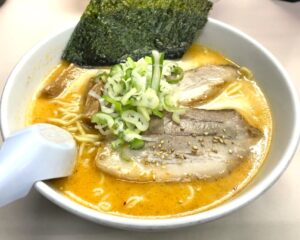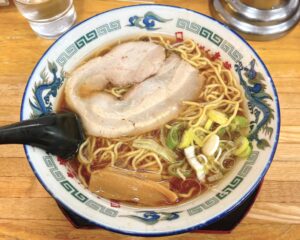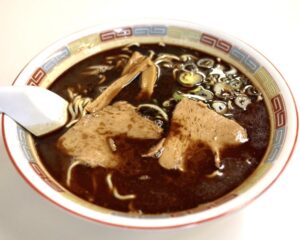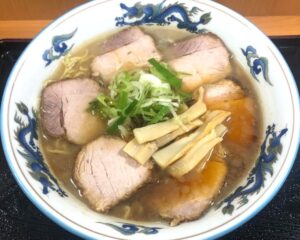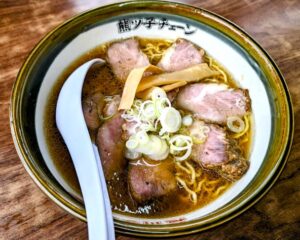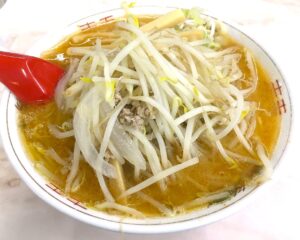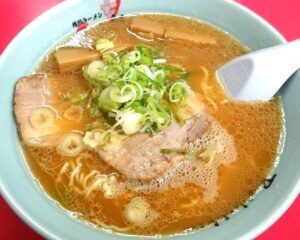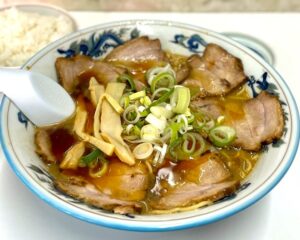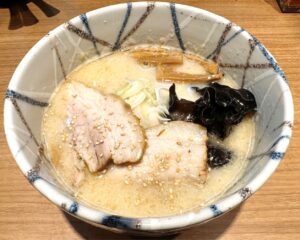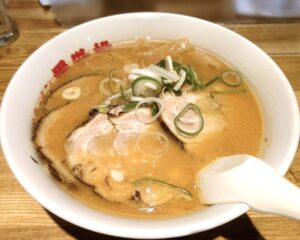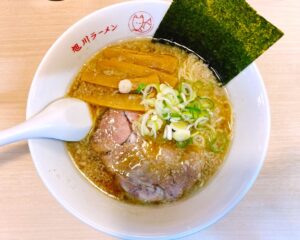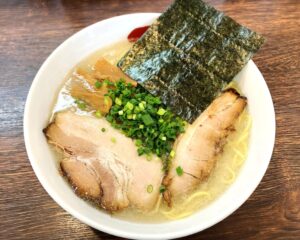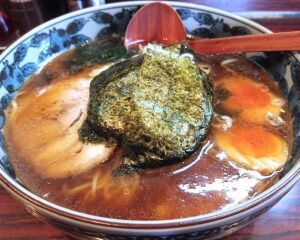Asahikawa Ramen (Hokkaido Pref.)
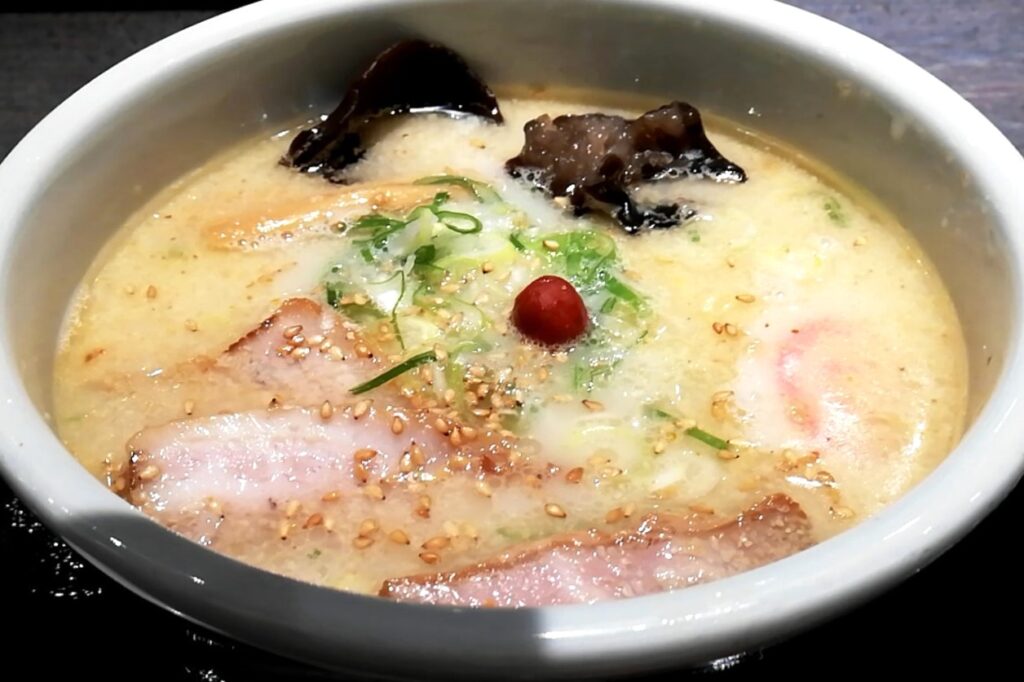
What is Asahikawa Ramen(旭川ラーメン)?
Ramen originated in Asahikawa, Hokkaido. Use thin, curly, low hydration noodles. Most of them use a double soup made with seafood, pork bones, and chicken bones, and the mainstream is to use soy sauce. Adding a lot of lard to the soup to keep it from getting cold.
Rich soup goes well with low-hydration noodles
Hokkaido’s three main local ramen are miso from Sapporo, soy sauce from Asahikawa, and salt from Hakodate. The Asahikawa ramen boom in the Tokyo metropolitan area began in the late 1990s. Although Asahikawa Ramen is a ramen with a long history, objectively it is interesting that it caused a major movement in Sapporo and Tokyo around that time. However, behind the scenes, there were movements that should have made this happen.
In Tokyo, Santouka(山頭火) opened in Ebisu in 1994. The head office is located in Asahikawa, and the company has grown rapidly since then. It has expanded to a chain of over 50 shops, mainly in Hokkaido and as far south as Hakata. However, as of 2022, there are more than 10 shops. Meanwhile, it continues to be popular overseas and has over 40 shops. By the way, the opening date of the main shop is March 10th(3/10 “San gatsu Tohka”in Japanese), which is named after the shop.
In the late 1990s, a concept of “Sapporo Ramen vs. Asahikawa Ramen” was created in Sapporo, and many such introductions were made in the media. Nowadays, Asahikawa ramen has completely permeated Sapporo, giving the illusion that it has already surpassed Asahikawa ramen and even become a new “Sapporo ramen.” Asahikawa Ramen’s first shop in Sapporo was Heiseiken(平成軒), which opened in 1989. Sapporo’s popular shops “Yusura(山桜桃)” and “Gojougen(五丈原)” are also Asahikawa ramen in the “Santouka” style.
So, what are the characteristics of Asahikawa ramen? The noodles is low-hydration noodles and are slightly thin and curly. Because it absorbs soup well, it easily absorbs soup, but on the other hand, it can also be said to spread easily. It is characterized by a rich soup made from seafood such as pork bones and dried sardines, and a soy sauce sauce. Many shops have simple ingredients. The two representative long-established shops are “Aoba(青葉)” and “Hachiya(蜂屋).”
“Aoba(青葉)” became a nationwide brand from 1997 to 1998 when it opened at the Shin-Yokohama Ramen Museum. He also actively opens shops at product exhibitions at famous department shops across the country, and even takes time off from the main shop to go to Tokyo to make ramen himself. The traditional soup stock, also known as 50-year soup, is made by slowly boiling animal-based ingredients such as pork bones and chicken bones, seafood such as bonito flakes, dried sardines, and kelp, and vegetables over low heat. There is a layer of oil on the surface of the soup, perhaps a unique feature of Asahikawa, an extremely cold region. This prevents it from cooling down and allows you to eat it piping hot.
Meanwhile, another leading shop, Hachiya(蜂屋), entered the Shin-Yokohama Ramen Museum in 1999. Outside of Sapporo and Fukuoka, it is quite rare for two ramen shops to be in the same area. That’s why you can say that this is a local area with many talented shops. This “Hachiya” is characterized by the aroma of its soup. The flavor of burnt lard has a strong impact, and people’s tastes are divided. However, it is precisely because of this impact that it has been loved in Asahikawa for a long time. The soup is a double soup made with simmered pork bones and dried mackerel. The expression “double soup” has been used for the past few years, but Hachiya has been offering double soup for half a century.
There is another one who is behind the Asahikawa boom. No, there is another group, and that is the “Kato clan(加藤一族).” The owner of “Hachiya” is also a member of the Kato family, and his older brother became the first president of “Kato Ramen(加藤ラーメン)”, one of Asahikawa’s representative noodle factories. His eldest son is now taking over the business and has expanded to Sapporo. The second son expanded into the Tokyo metropolitan area and successfully created the Asahikawa boom in both Sapporo and Tokyo. What’s interesting here is that while his older brother expanded into Sapporo as a noodle manufacturer, his second son expanded into Sapporo as a ramen shop with Kyokuryu(旭龍) as its representative, and then grew the business through franchising. It is. In addition to “Kyokuryu(旭龍),” the company quickly expanded its market share with “Kyokuho(旭鳳),” “Komori(こもり),” and “Kyoka(共華).” Asahikawa has become so popular that it rivals Sapporo.(Currently closed)
In addition, the popular shop Tenkin(天金) does not use dried sardines, and uses only pork bones and chicken bones to create a surprisingly rich flavor.
Also, in Asahikawa, soy sauce ramen(醤油ラーメン) is written as “shoyu(正油)” in many places.
Ramen-Japan / Examples of Ramen Shops
Long-established Asahikawa Ramen Shops
Popular Asahikawa Ramen Shops
-
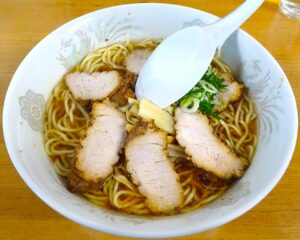
Ginger Ramen Mizuno (生姜ラーメン みづの) *Popular for its thick pork slices and ginger.
-
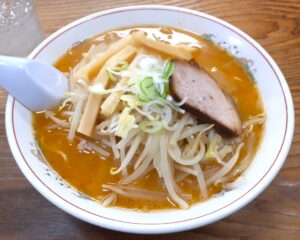
-
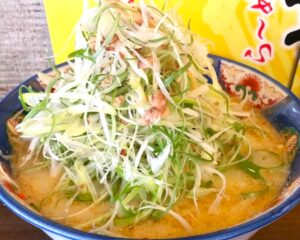
Ramen Kura(らーめん蔵) *Popular for its salt ramen with plenty of green onions.
-
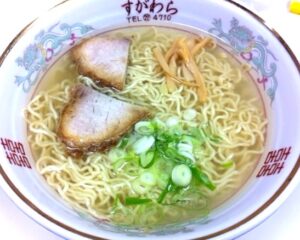
Ramen Sugawara (ラーメン すがわら) *Also popular for its salt ramen.
-
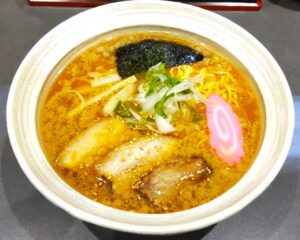
-
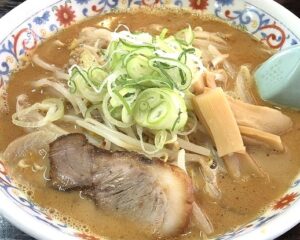
-
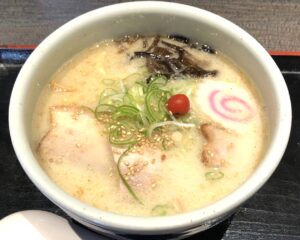
-

-
